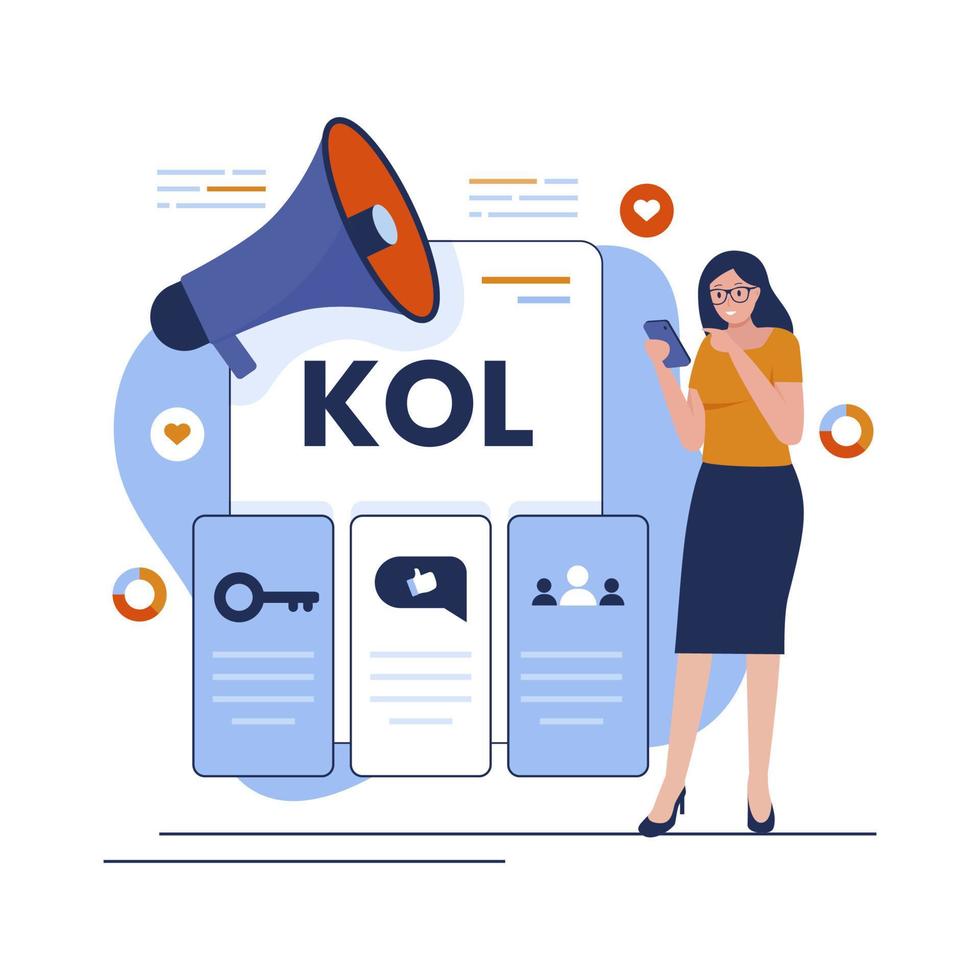In recent years, influencer marketing has become a powerful tool for businesses to reach their target audience in an authentic and engaging way. Key Opinion Leaders (KOLs), often referred to as influencers, have the ability to shape opinions, boost brand awareness, and drive conversions. However, choosing the right KOL for your brand is crucial to ensure your marketing campaign is effective. In this article, we will explore the best strategies to help you choose the right KOLs for your brand, and how to make the most of influencer partnerships to drive results.
Why Influencer Marketing Is Important for Your Brand
Influencer marketing has evolved into a significant marketing strategy, helping businesses of all sizes enhance their visibility and credibility. With their strong online presence, KOLs can create organic content that resonates with their followers, making it one of the most trusted forms of advertising. Research indicates that nearly 49% of consumers rely on influencer recommendations before making a purchase decision.

Unlike traditional advertising, influencer marketing allows brands to tap into niche communities and engage with audiences in a more personal way. However, finding the right influencer is not always straightforward. Choosing an influencer who aligns with your brand values and goals is key to creating an impactful marketing campaign.
Defining Your Goals
Before diving into influencer partnerships, it’s essential to define the goals of your influencer marketing campaign. Are you looking to increase brand awareness, boost sales, or promote a specific product? Identifying your goals will help you determine the type of influencer you need to partner with.
Types of Influencer Marketing Goals
- Brand Awareness
If you’re looking to introduce your brand to a new audience, choosing influencers with a broad reach across social media platforms is ideal. These influencers can help generate buzz and attract attention to your brand. - Lead Generation
Influencers can help you drive specific actions such as sign-ups or downloads. In this case, influencers with a more engaged, niche following can help you gather leads from a highly targeted audience. - Sales and Conversions
When your goal is to increase sales, focus on influencers whose followers have a high propensity to purchase products or services. Influencers with strong call-to-action content and persuasive abilities are perfect for driving conversions. - Product Launches
For product launches, it’s essential to collaborate with influencers who can create excitement and anticipation around your new offering. Influencers with a loyal and active following can create pre-launch buzz and hype.
Characteristics to Look for in the Right KOL
Once you have defined your campaign goals, it’s time to choose the right KOL. It’s important to assess the following characteristics to ensure the KOL aligns with your brand.
1. Relevance to Your Brand
The first step in choosing the right KOL is ensuring that their niche aligns with your brand values and target audience. For example, if you are a fitness brand, working with an influencer who specializes in health and wellness will ensure that their audience is likely to be interested in your products.
Take the time to research their content, the products they promote, and the kind of lifestyle they lead. If they align with your brand’s image and goals, they can create authentic and engaging content that resonates with their followers.
2. Audience Demographics
Understanding the demographics of a KOL’s followers is essential. The ideal KOL should have an audience that closely matches your target market. If your brand is targeting young women, collaborating with an influencer who has a large following of young, female consumers would be ideal.
Influencers often share insights into their audience’s age, gender, location, and interests, so make sure to review this data before making your choice. A mismatch between your brand’s audience and the influencer’s followers can result in a less effective campaign.
3. Engagement Rate
While follower count is important, it’s not the only metric that matters. The engagement rate of a KOL is a more accurate reflection of how actively their audience interacts with their content. Influencers with high engagement rates tend to have a more dedicated and loyal following, which can lead to higher conversion rates for your campaign.
Engagement rates can be measured by analyzing likes, comments, shares, and other forms of interaction on their posts. The higher the engagement rate, the more effective the influencer will be at promoting your brand.
4. Authenticity and Credibility
One of the most important factors to consider when choosing a KOL is their authenticity. Influencers who are genuinely passionate about the products or services they promote are more likely to have a lasting impact on their audience. Consumers can easily detect inauthentic endorsements, which can lead to negative perceptions of your brand.
Look for KOLs who share honest opinions and engage with their followers in a meaningful way. Authenticity builds trust, and trust is key to a successful influencer marketing campaign.
5. Content Quality and Style
The quality of content a KOL produces is crucial to your brand’s reputation. Review their previous posts to see if their content aligns with your brand’s messaging and aesthetic. A KOL’s style should resonate with your brand’s tone, whether it’s professional, playful, or aspirational.
Additionally, ensure that the influencer produces high-quality content, including well-composed images, clear videos, and well-written captions. Great content is essential for capturing the attention of your target audience.
Influencer Platforms vs. Direct Partnerships
When working with KOLs, you have two main options: using an influencer platform or directly reaching out to influencers. Both methods have their pros and cons, and the best approach depends on your business needs.
Influencer Platforms
Influencer marketing platforms like AspireIQ, Influencity, or Upfluence can help you discover, contact, and manage influencers in one place. These platforms provide access to detailed analytics, including engagement rates, audience demographics, and past campaign performance. They also allow for easier payment processing and contract management.
The main advantage of using an influencer platform is the convenience and time-saving aspects. However, these platforms often come with a fee, which can add to the cost of your campaign.
Direct Partnerships
On the other hand, working directly with influencers can lead to more personalized relationships and potentially lower costs. This approach requires more time and effort to find the right influencers and negotiate terms, but it gives you more control over your campaign.
Building a direct relationship with an influencer allows you to collaborate on a deeper level and create custom content that feels more authentic.
Measuring the Success of Your Influencer Marketing Campaign
After selecting the right KOLs and launching your influencer marketing campaign, it’s important to track its performance. Measuring success involves monitoring key performance indicators (KPIs) that align with your goals.

Key Metrics to Track
- Engagement Rate
Track likes, shares, comments, and other forms of interaction on the influencer’s posts. A high engagement rate means that the influencer’s audience is actively involved with the content. - Click-Through Rate (CTR)
If your campaign involves directing traffic to your website or product page, monitor the CTR to see how many people are clicking on the links in the influencer’s content. - Conversion Rate
Ultimately, the success of your influencer marketing campaign depends on conversions. Track how many sales or leads were generated from the influencer’s content. - Return on Investment (ROI)
Measuring ROI will help you understand the financial impact of your campaign. Analyze how much revenue was generated compared to how much you spent on the influencer partnership.
Conclusion
Influencer marketing is a powerful strategy that can significantly impact your brand’s visibility and sales. However, choosing the right KOL is key to achieving success. By considering factors such as relevance, audience demographics, engagement rate, and authenticity, you can select influencers who align with your brand’s goals and values. Whether you choose to work through an influencer platform or establish direct partnerships, make sure to measure your campaign’s success and adjust your strategy accordingly. With the right KOLs, your brand can leverage the full potential of influencer marketing and reach new heights of success.

Leave a Reply